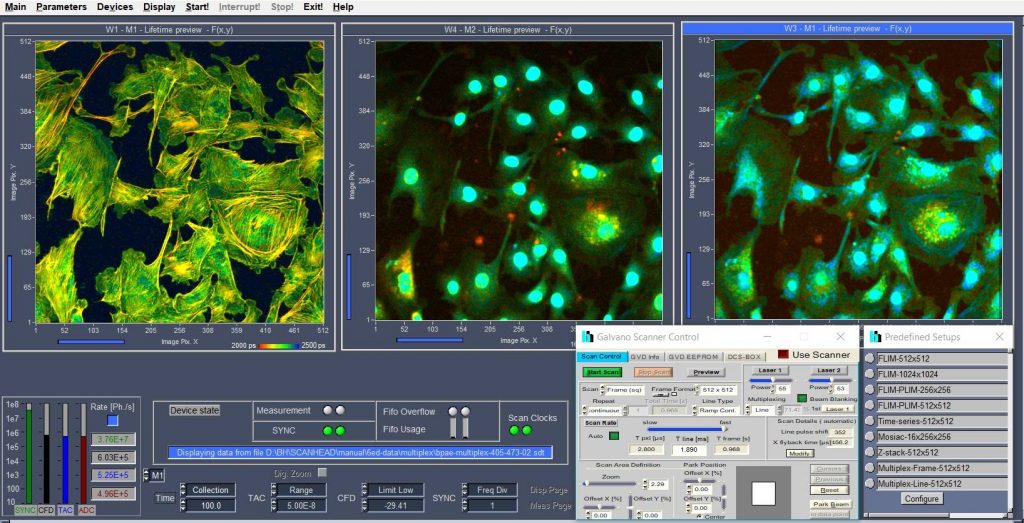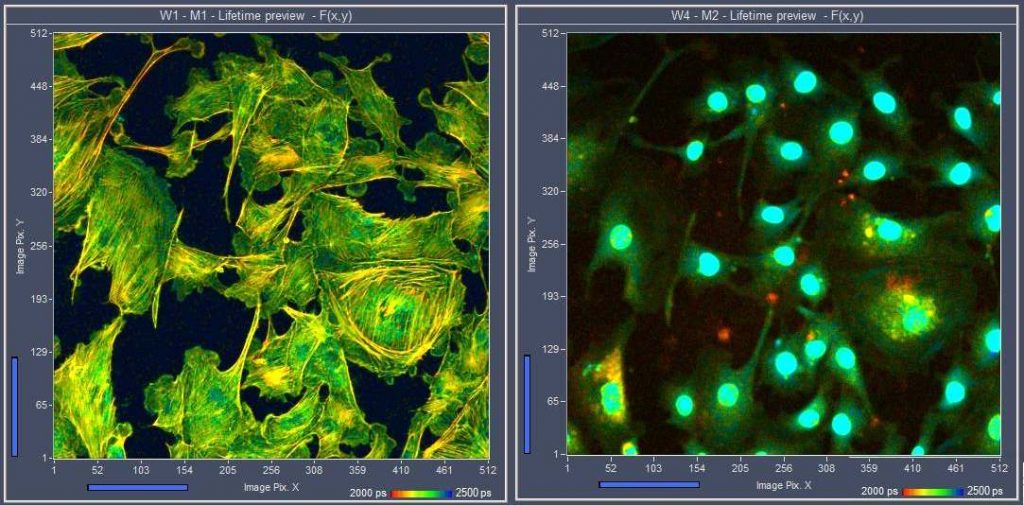Excitation-wavelength multiplexing is an efficient way to record FLIM data of several fluorophores with different excitation spectra simultaneously. Compared with sequential recording at different excitation wavelength the advantage is that possible laser-induced changes, focus drift, or motion in the sample have comparable effects on the FLIM data of all laser wavelengths. So far, excitation-multiplexed FLIM has been shown to be a promising technique for metabolic imaging. However, the technique has a much larger potential. The multiplexing rate can be the order of 1 Hz, 1 kHz, or several 100 kHz for frame, line, and pixel multiplexing, respectively. Multiplexing therefore does not conflict with time-series recording. Even temporal mosaic FLIM with a resolution in the range of 50 ms per image appears feasible. FLIM with excitation-wavelength multiplexing is therefore a solution for the investigation of physiological effects, effects of environment conditions or drugs on the cell metabolism, or photodynamic-therapy effects. Excitation-wavelength multiplexing is available in the bh DCS-120 confocal and multiphoton FLIM systems, and in the bh FLIM systems for the Zeiss LSM 980. For more information, please see Application Note, FLIM with Excitation-Wavelength Multiplexing.
Back to News


